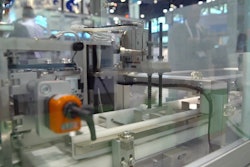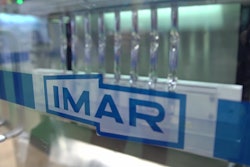Our brains employ two major working memory-processing systems that define how we act and react in life. The first system, the visuospatial sketchpad, records the visual stimuli that are all around us. This makes us aware there is an aisle with products and a POP display in front of us, so we don’t run into it. The phonological loop keeps in mind information that is not visual, things like numbers and information we want to be aware of, and repeats this information to keep it active in our working memory. These systems are important; they help us function throughout the day without running into walls, they keep us from forgetting things moment to moment, and they enable us to advance in our life and get things done.
But these systems do have limits. We can’t remember everything and keep all relevant information top of mind. When we become overtaxed with information, we mentally bail; when we are understimulated, we become bored and apathetic. And even if you’re a dedicated and trained shopper, retail is one of the most highly visually stimulating places I can think of. But, don’t fret; your packaging can make an impression as long as you know the rules of the memory game.
‘The Magical Number’
In 1956, George A. Miller published a very famous psychology paper, “The Magical Number Seven, Plus or Minus Two: Some Limits on Our Capacity for Processing Information.” In it he posed that working memory has a limit: “seven, plus or minus two chunks.” That’s five to nine “chunks” of information or units of memory input. Think of your phone number. (Well, think of the last phone number you had to memorize. Thanks, Siri!) We further “chunk” the seven unique digits into shorter strings of three and four. This isn’t accidental. It’s psychology.
So, how is this illustrated in packaging design? da Vinci said it best: “Simplicity is the ultimate sophistication.” The more you can simplify and reduce chunking on your packaging, the more attractive it will be, and ultimately, the longer it will be held in active (working) memory. For instance, your packaging design might include a logo, a brand name, a product name, a picture of the product, a window revealing the product, the serving size, and vital directions. Those seven pieces of information (plus or minus two) will land you in the sweet spot for quick consumption by the consumer in a retail setting. Simple designs are found faster and viewed longer than complex designs.
Consider two lobster bisque packages: one from Gil’s Gourmet and one from Publix. I have nothing against the label for Gil’s Gourmet’s Artichoke and Lobster Bisque, which features two suspicious French lobsters holding fork (a fork, for bisque?) and spoon, in front of 60-ft-tall artichokes. But when I compare the packaging to Publix’s simpler Lobster Bisque, I’m struggling to find what value Gil’s 13 chunks of information bring to the table. Outside of the simple view of the bisque, the brand, and the name of the product, what does the extra gain?
I actually feel horrible to put Gil’s Gourmet under the spotlight, because they are one of the 93% of products on the shelf where the design was not leveraged as a strategic aspect of the packaging.
Consider Mika Kañive’s Frts & Ygrt concept package for a fruit and yogurt product. With approximately three chunks of information, the product is easy to understand, and, by taking out letters in the name, it can still be phonetically pronounced in English and Spanish.
But, even when you apply the rule correctly, you’ll still not stay in working memory indefinitely. The half-life for working memory (the time it takes for the impact of the sensory input to be reduced by half) is just a measly seven seconds for a store of three chunks. What becomes interesting in research of half-life memory is what happens when you’re able to reduce memory chunking to one: The half-life increases to 70 seconds. That’s over one minute of top-of-mind consideration! As your brand becomes more desirable and a staple of the category, consider the idea of one-chunk reduction. When I say Starbucks, Nike, McDonald’s, and Apple, usually just one chunk of info bubbles up from your long-term memory.
In the same vein, long-term memory can be exploited to confuse. It’s not a rock-solid system. Just as easily as we can forget a digit in a phone number, we can quickly mis-associate a brand, product, and/or an offering. Knock-offs and counterfeit products deftly mimic colors, fonts, graphics, and layout of more popular brands to short-circuit your memory and distract you into buying something outside your norm.
Choosing the chunks
How do you determine what your most crucial five to nine selling points should be? The brand owner has one list, the strategy team another, and the design team has an entirely separate focus. The best way to analyze your design is to let your consumers show you what works, before you go into full production. Quantitative consumer testing, like eye tracking and emotion mapping, can be an invaluable window into how the everyday shopper quickly perceives your package. By tracking the shopper’s gaze, you can instantly determine what “chunks” of your packaging garner the most attention, and how your product stands up against others on the crowded retail shelf.
If your audience only has seven seconds to make a memory before they are on to the next flight of fancy, be sure your packaging is simple and impactful. If you have any questions on how exactly to improve your product’s recall factor, I’d love to hear them.
Dr. R. Andrew Hurley is Assistant Professor of Packaging Science, Clemson University, and founder of Package InSight and The Packaging School.



























